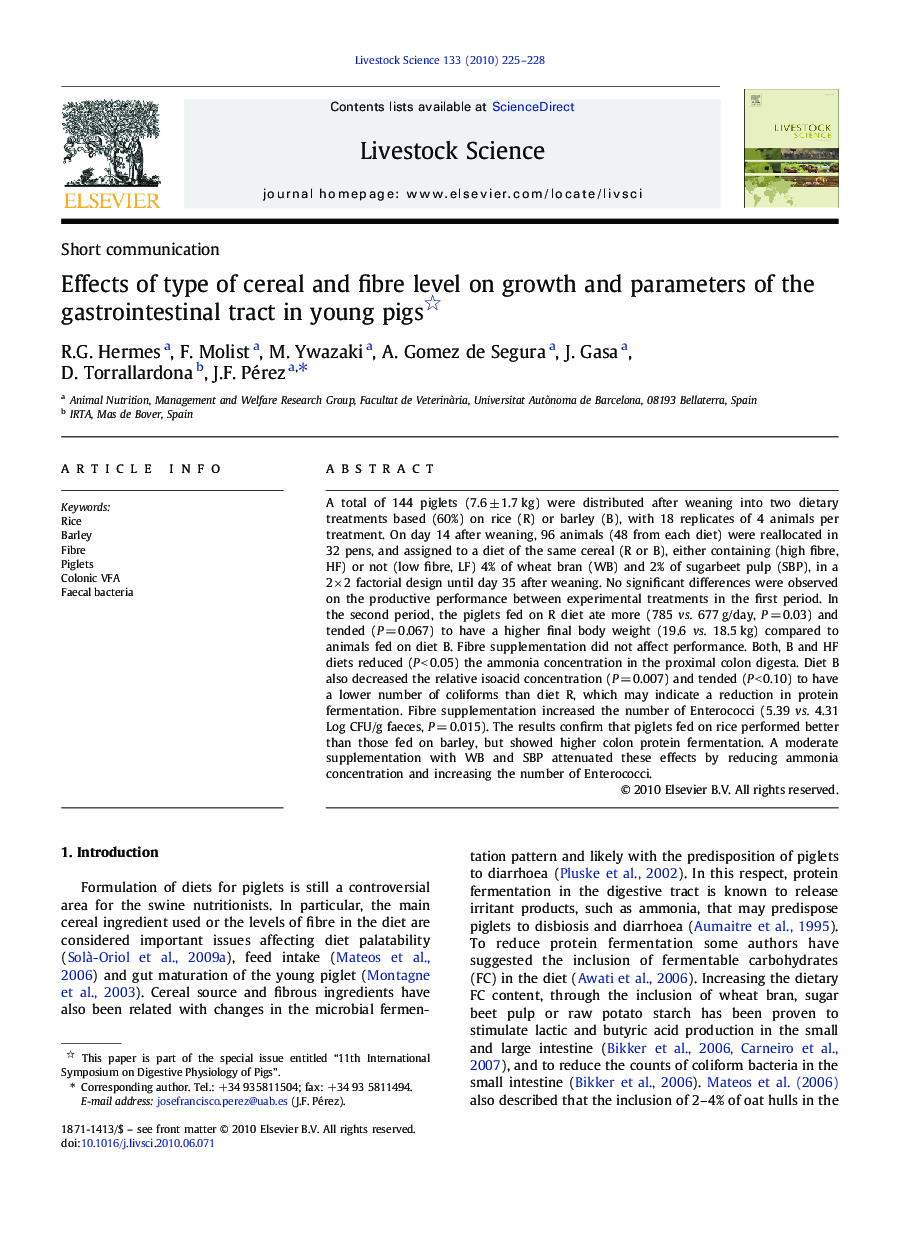| Article ID | Journal | Published Year | Pages | File Type |
|---|---|---|---|---|
| 2447733 | Livestock Science | 2010 | 4 Pages |
A total of 144 piglets (7.6 ± 1.7 kg) were distributed after weaning into two dietary treatments based (60%) on rice (R) or barley (B), with 18 replicates of 4 animals per treatment. On day 14 after weaning, 96 animals (48 from each diet) were reallocated in 32 pens, and assigned to a diet of the same cereal (R or B), either containing (high fibre, HF) or not (low fibre, LF) 4% of wheat bran (WB) and 2% of sugarbeet pulp (SBP), in a 2 × 2 factorial design until day 35 after weaning. No significant differences were observed on the productive performance between experimental treatments in the first period. In the second period, the piglets fed on R diet ate more (785 vs. 677 g/day, P = 0.03) and tended (P = 0.067) to have a higher final body weight (19.6 vs. 18.5 kg) compared to animals fed on diet B. Fibre supplementation did not affect performance. Both, B and HF diets reduced (P < 0.05) the ammonia concentration in the proximal colon digesta. Diet B also decreased the relative isoacid concentration (P = 0.007) and tended (P < 0.10) to have a lower number of coliforms than diet R, which may indicate a reduction in protein fermentation. Fibre supplementation increased the number of Enterococci (5.39 vs. 4.31 Log CFU/g faeces, P = 0.015). The results confirm that piglets fed on rice performed better than those fed on barley, but showed higher colon protein fermentation. A moderate supplementation with WB and SBP attenuated these effects by reducing ammonia concentration and increasing the number of Enterococci.
